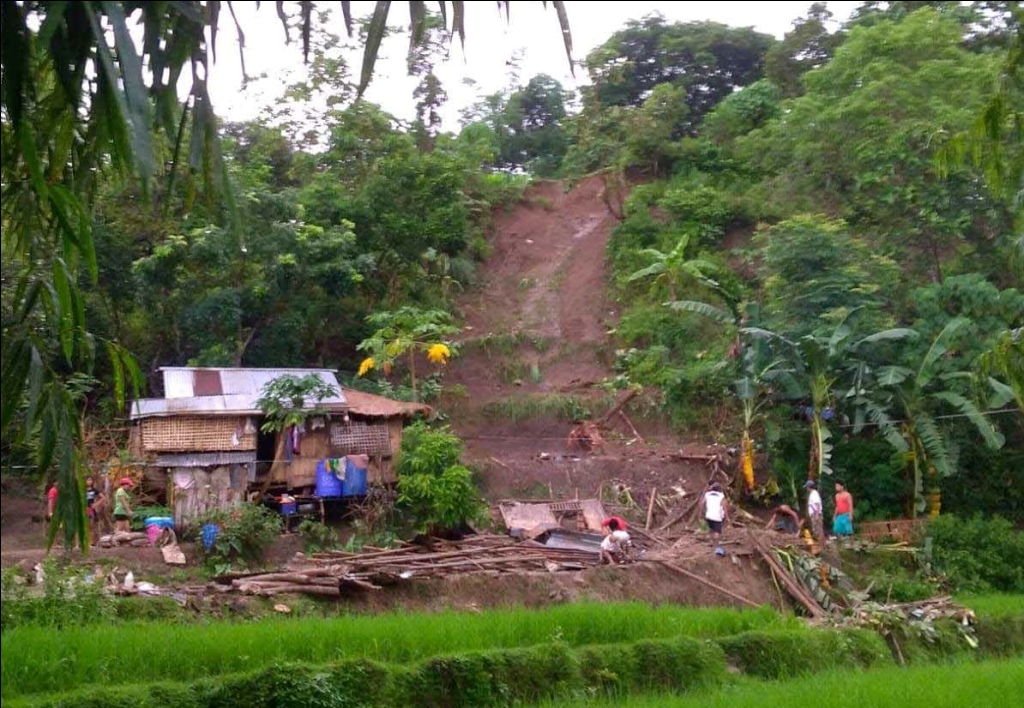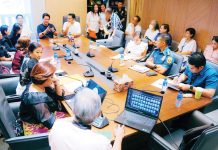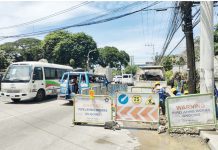
BY GLENDA TAYONA and STEPHEN LOUIE CHECA
ILOILO City – Heavy rains triggered a landslide that killed two hildren and injured their mother in Barangay Binanu-an, Barbaza, Antique.
Following the predawn tragedy yesterday, the Local Disaster Risk Reduction and Management Office (LDRRMO) of Barbaza ordered a forced evacuation of 87 persons from 19 families living in landslide high-risk areas of Barangay Binanu-an.
The evacuees moved to the barangay’s daycare center and barangay hall.
Barbaza is one of the 10 municipalities in Antique that the Mines and Geosciences Bureau (MGB) of the Department of Environment and Natural Resources in Region 6 identified as highly susceptible to landslides.
The nine other Antique towns were Valderrama, Laua-an, San Remigio, Patnongon, Bugasong, Tibiao, Culasi, Sebaste, and Pandan.
The Barbaza landslide casualties were six-year-old Talia Agapito and three-year-old brother Zandrew. Their nipa-and-bamboo house which was at the foot of a hill was ran over by cascading mud, stones and fallen vegetation around 3 a.m.
The children’s parents Robert and Tessy survived although the mother sustained injuries.
The Agapitos were asleep when the landslide struck their house.
According to Barbaza LDRRMO officer Isidro Magtulis, their office’s responders and policemen brought the Agapitos to the Pedro L. Gindap Memorial Hospital where the two children were pronounced dead.
Barangay Binanu-an was some 1.5 kilometers from the town proper of Barbaza.
The local government of Barbaza released relief goods to the displaced families of Barangay Binanu-an.
Around 1 p.m. yesterday the Municipal Disaster Risk Reduction and Management Council headed by Mayor Gerry Necor had an emergency meeting.
“We are continuously monitoring other barangays at risk of landslides,” said Magtulis.
These were the villages of Embrangga-an, Yapo and Bahuyan.
A forced evacuation of residents would be ordered if necessary, said Magtulis.
According to MGB Region 6 chief geologist Mae Magarzo in a recent interview over government-owned DyLL Radyo Pilipinas Iloilo, natural factors contribute to landslides such as steep slopes, weak rock characteristics, loose thick soil and poor vegetation.
But landslides can also be triggered by rain which saturates and loosens rock and soil, or by ground movement caused by an earthquake, said Magarzo.
Tropical Depression “Josie”, though hovering over Batanes in the northernmost of Luzon, enhanced the southwest monsoon, thus the heavy rains in parts of Western Visyas, according to the Philippine Atmospheric, Geophysical and Astronomical Services Administration (Pagasa).
In other provinces of Western Visayas, MGB identified the following municipalities and cities highly susceptible to landslides:
* Aklan – Libacao, Madalag, Malinao, Ibajay, Tangalan, Nabas, Malay, Buruanga, Balete, and Makato
* Capiz – Tapaz, Jamindan, Maayon, President Roxas, Pilar, Dumarao, Ivisan, Roxas City, Dumalag, and Pontevedra
* Iloilo – Leon, Tubungan, Igbaras, Miag-ao, San Joaquin, Maasin, Janiuay, Calinog, Lambunao, and Alimodian
* Guimaras – Jordan, San Lorenzo, Buenavista, Sibunag, and Nueva Valencia
* Negros Occidental – Cadiz City, Talisay City, Silay City, Murcia, Escalante City, Don Salvador Benedicto, Himamaylan City, Binalbagan, and La Carlota City.
In its 11 a.m. weather bulletin yesterday, Pagasa said “Josie” was last spotted 170 km northeast of Basco, Batanes.
“Josie”, packing maximum sustained winds of up to 60 kph and gustiness of up to 75 kph, was moving north northeast at 25 kph.
According to Pagasa, the southwest monsoon would bring scattered to widespread rains over Western Visayas, Metro Manila, Central Luzon, Ilocos Region, Cordillera Administrative Region, rest of Cagayan Valley, Cavite, Batangas, Rizal, Laguna, the Mindoro provinces, and northern Palawan including the Calamian Group of Islands./PN





